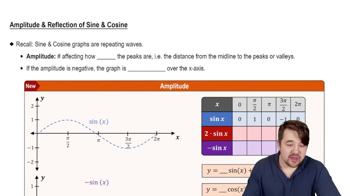Determine the simplest form of an equation for each graph. Choose b > 0, and include no phase shifts. (Midpoints and quarter points are identified by dots.)
<IMAGE>
 Verified step by step guidance
Verified step by step guidance Verified video answer for a similar problem:
Verified video answer for a similar problem:



 5:43m
5:43mMaster Introduction to Tangent Graph with a bite sized video explanation from Patrick
Start learning